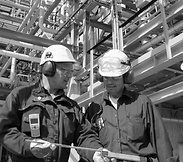Engineering and Technology Quarterly Reviews
ISSN 2622-9374




Published: 01 June 2023
Water Resources Management and Applications using GIS: An Overview
Bashar Munieer Yahya, Khansaa Abdulelah Ahmed, Akram Mohammed Salih
University of Mosul

Download Full-Text Pdf
10.5281/zenodo.7990666
Pages: 65-73
Keywords: GIS Technologies, Spatial Distribution, Forecasting, Management, Water Resources
Abstract
Due to the extensive use of geographic information system (GIS) concepts, planning and design for water resources are evolving. The effects of human activity are all around us in some places, and water resources are getting harder to find. In this situation, evaluating these resources, estimating consequences, and developing plans to lessen impacts and enhance sustainability while utilizing the finest technology available are all important. While geographic information systems (GIS) offer the best tools for managing water resources and other related issues like drought and flood risk, remote sensing offers the essential data for managing these resources. Also, GIS can be integrated with many techniques like artificial intelligence models and hydrological models. This paper aims to present a comprehensive survey of the best practices and uses of GIS technologies in water resources engineering includes, water resources mapping, rainfall-runoff measurements, flood forecasting, irrigation management, water quality and drought monitoring.
References
Abd Majid, N., Razman, M. R., Syed Zakaria, S. Z., Ahmed, M. F., & Zulkafli, S. A. (2020). Flood disaster in Malaysia: Approach review, causes and application of geographic information system (GIS) for mapping of flood risk area. Ecology, Environment and Conservation, 27(May), 1-8.
Abdelhaleem, F. S., Basiouny, M., Ashour, E., & Mahmoud, A. (2021). Application of remote sensing and geographic information systems in irrigation water management under water scarcity conditions in Fayoum, Egypt. Journal of Environmental Management, 299, 113683.
Abedi Gheshlaghi, H., Feizizadeh, B., & Blaschke, T. (2020). GIS-based forest fire risk mapping using the analytical network process and fuzzy logic. Journal of Environmental Planning and Management, 63(3), 481-499.
Abera, A., Verhoest, N. E., Tilahun, S., Inyang, H., & Nyssen, J. (2021). Assessment of irrigation expansion and implications for water resources by using RS and GIS techniques in the Lake Tana Basin of Ethiopia. Environmental Monitoring and Assessment, 193(1), 1-17.
Abijith, D., Saravanan, S., Singh, L., Jennifer, J. J., Saranya, T., & Parthasarathy, K. S. S. (2020). GIS-based multi-criteria analysis for identification of potential groundwater recharge zones-a case study from Ponnaniyaru watershed, Tamil Nadu, India. HydroResearch, 3, 1-14.
Alexandratos, S. D., Barak, N., Bauer, D., Davidson, F. T., Gibney, B. R., Hubbard, S. S., & Westerhof, P. (2019). Sustaining water resources: Environmental and economic impact. ACS Sustainable Chemistry & Engineering, 7(3), 2879-2888.
Al-Ghobari, H., Dewidar, A., & Alataway, A. (2020). Estimation of surface water runoff for a semi-arid area using RS and GIS-based SCS-CN method. Water, 12(7), 1924.
Ali, M. I., Dirawan, G. D., Hasim, A. H., & Abidin, M. R. (2019). Detection of changes in surface water bodies urban area with NDWI and MNDWI methods. International Journal on Advanced Science Engineering Information Technology, 9(3), 946-951.
Annis, A., & Nardi, F. (2019). Integrating VGI and 2D hydraulic models into a data assimilation framework for real time flood forecasting and mapping. Geo-spatial Information Science, 22(4), 223-236
Asbury, Z., & Aly, M. H. (2019). A geospatial study of the drought impact on surface water reservoirs: study cases from Texas, USA. GIScience & Remote Sensing, 56(6), 894-910.
Ashtekar, A. S., Mohammed-Aslam, M. A., & Moosvi, A. R. (2019). Utility of normalized difference water index and GIS for mapping surface water dynamics in sub-upper Krishna Basin. Journal of the Indian Society of Remote Sensing, 47(8), 1431-1442.
Ben Khélifa, W., & Mosbahi, M. (2022). Modeling of rainfall-runoff process using HEC-HMS model for an urban ungauged watershed in Tunisia. Modeling Earth Systems and Environment, 8(2), 1749-1758.
Blair, G. S., Henrys, P., Leeson, A., Watkins, J., Eastoe, E., Jarvis, S., & Young, P. J. (2019). Data science of the natural environment: a research roadmap. Frontiers in Environmental Science, 7, 121.
Burrough, P. A., McDonnell, R. A., & Lloyd, C. D. (2015). Principles of geographical information systems. Oxford university press.
Chen, D., Elhadj, A., Xu, H., Xu, X., & Qiao, Z. (2020). A study on the relationship between land use change and water quality of the Mitidja watershed in Algeria based on GIS and RS. Sustainability, 12(9), 3510.
Chikabvumbwa, S. R., D. Sibale, and S. W. Chisale. "Irrigation site selection using hybrid GIS-based approach." International Journal F Human Capital in Urban Management 6, no. 2 (2021): 149-158.
Costache, R., Hong, H., & Pham, Q. B. (2020). Comparative assessment of the flash-flood potential within small mountain catchments using bivariate statistics and their novel hybrid integration with machine learning models. Science of The Total Environment, 711, 134514.
Das, S. (2019). Extreme rainfall estimation at ungauged sites: Comparison between region‐of‐influence approach of regional analysis and spatial interpolation technique. International Journal of Climatology, 39(1), 407-423.
Elhaeesahar, M., & Masoudi, M. (2019). GIS analysis for vulnerability assessment of drought in Khuzestan province in Iran using standardized precipitation index (SPI).
Fernández Moniz, P., Almeida, J. S., Pino, A. T., & Suárez Rivero, J. P. (2020). A GIS-based solution for urban water management. Water International, 45(6), 660-677.
Habibie, M. I., Ahamed, T., Noguchi, R., & Matsushita, S. (2020, December). Deep learning algorithms to determine drought prone areas using remote sensing and GIS. In 2020 IEEE Asia-Pacific Conference on Geoscience, Electronics and Remote Sensing Technology (AGERS) (pp. 69-73). IEEE.
Hashim, H. Q., & Sayl, K. N. (2021). Detection of suitable sites for rainwater harvesting planning in an arid region using geographic information system. Applied Geomatics, 13(2), 235-248.
Hussain, A., Madan, R., & Kamboj, V. (2022). Applications of remote sensing and GIS in hydrological and hydrogeological studies: integrated watershed management. In Addressing Environmental Challenges Through Spatial Planning (pp. 237-251). IGI Global.
Ighile, E. H., Shirakawa, H., & Tanikawa, H. (2022). Application of GIS and Machine Learning to Predict Flood Areas in Nigeria. Sustainability, 14(9), 5039.
Jiménez, A. F., Cárdenas, P. F., & Jiménez, F. (2021). Smart water management approach for resource allocation in High-Scale irrigation systems. Agricultural Water Management, 256, 107088.
Joshi, N., Bista, A., Pokhrel, I., Kalra, A., & Ahmad, S. (2019, May). Rainfall-Runoff Simulation in Cache River Basin, Illinois, Using HEC-HMS. In World environmental and water resources congress (Vol. 2019, pp. 348-360).
Judeh, T., Bian, H., & Shahrour, I. (2021). GIS-based spatiotemporal mapping of groundwater potability and palatability indices in arid and semi-arid areas. Water, 13(9), 1323.
Kombaitan, B., Yudoko, G., & Purboyo, H. (2018). Application of GIS on determination of flood prone areas and critical arterial road network by using CHAID method in bandung area. In MATEC Web of Conferences (Vol. 147, p. 02007). EDP Sciences.
Li, H., Zech, J., Ludwig, C., Fendrich, S., Shapiro, A., Schultz, M., & Zipf, A. (2021). Automatic mapping of national surface water with OpenStreetMap and Sentinel-2 MSI data using deep learning. International Journal of Applied Earth Observation and Geoinformation, 104, 102571.
Liu, J., Gao, Z., Wang, M., Li, Y., Yu, C., Shi, M., ... & Ma, Y. (2019). Stable isotope characteristics of different water bodies in the Lhasa River Basin. Environmental Earth Sciences, 78, 1-11.
Masoudi, M., Centeri, C., Jakab, G., Nel, L., & Mojtahedi, M. (2021). GIS-based multi-criteria and multi-objective evaluation for sustainable land-use planning (case study: Qaleh Ganj County, Iran) “landuse planning using mce and mola”. International Journal of Environmental Research, 15, 457-474.
Matomela, N., Tianxin, L., Morahanye, L., Bishoge, O. K., & Ikhumhen, H. O. (2019). Rainfall-runoff estimation of Bojiang lake watershed using SCS-CN model coupled with GIS for watershed management. J Appl Adv Res, 4(1), 16-24.
Phong, T. V., Pham, B. T., Trinh, P. T., Ly, H. B., Vu, Q. H., Ho, L. S., ... & Prakash, I. (2021). Groundwater Potential Mapping Using GIS‐Based Hybrid Artificial Intelligence Methods. Groundwater, 59 (5), 745-760.
Piyathilake, I. D. U. H., Ranaweera, L. V., Udayakumara, E. P. N., Gunatilake, S. K., & Dissanayake, C. B. (2022). Assessing groundwater quality using the water quality index (WQI) and GIS in the Uva Province, Sri Lanka. Applied Water Science, 12(4), 72.
Rojas, O. (2021). Next generation agricultural stress index system (ASIS) for agricultural drought monitoring. Remote Sensing, 13 (5), 959.
Sishah, S. (2021). Rainfall runoff estimation using GIS and SCS-CN method for awash river basin, Ethiopia. Int. J. Hydrol, 5, 33-37.
Singh S, Ghosh NC, Gurjar S, Krishan G, Kumar S, Berwal P. 2018. Indexbased assessment of suitability of water quality for irrigation purpose under Indian conditions. Environmental Monitoring and Assessment 190 (29): 1–14.
Somers, L. D., & McKenzie, J. M. (2020). A review of groundwater in high mountain environments. Wiley Interdisciplinary Reviews: Water, 7(6), e1475.
Tharmar, E., Abraham, M., Prakash, R., Sundaram, A., Flores, E. S., Canales, C., & Alam, M. A. (2022). Hydrogeochemistry and Water Quality Assessment in the Thamirabarani River Stretch by Applying GIS and PCA Techniques. Sustainability, 14(24), 16368.
Yariyan, P., Avand, M., Abbaspour, R. A., Karami, M., & Tiefenbacher, J. P. (2020). GIS-based spatial modeling of snow avalanches using four novel ensemble models. Science of the Total Environment, 745, 141008.
Zhang, F., Yushanjiang, A., & Jing, Y. (2019). Assessing and predicting changes of the ecosystem service values based on land use/cover change in Ebinur Lake Wetland National Nature Reserve, Xinjiang, China. Science of the Total Environment, 656, 1133-1144.
